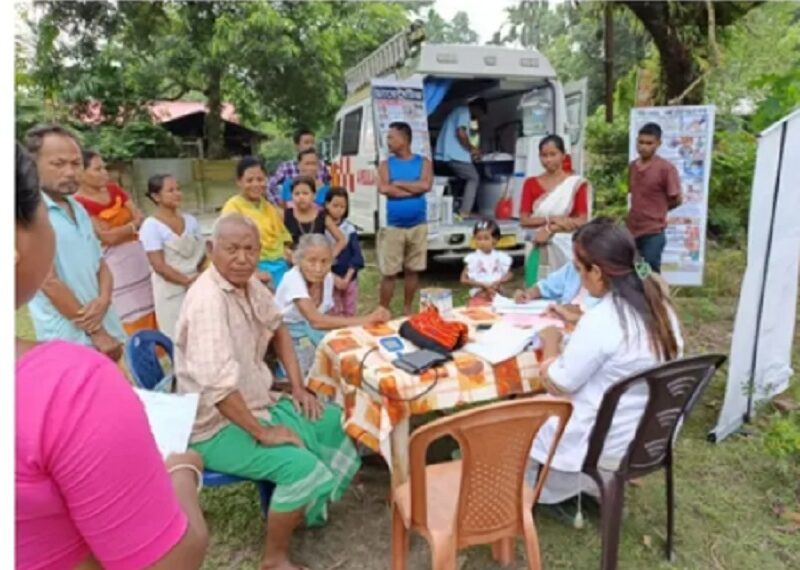Guwahati: Assam’s Bodoland Territorial Region (BTR) has witnessed a remarkable decline in maternal and infant mortality rates, driven by improved health-seeking behaviour and enhanced healthcare delivery at the grassroots level.
Official data shows that over the past five years, there has been a notable reduction in maternal and infant mortality rates across all BTR districts. The number of maternal deaths per 1,00,000 has declined from 264 in 2021–22 to 136 in 2024–25, marking an approximate 46 percent reduction. The number of deaths of infants (less than one year of age) per 1,000 has decreased from 22 in 2021–22 to 15 in 2024–25, marking a 31 percent decline.
A major factor behind this progress has been the ‘Rog Nirmul BTR Mission’, launched in 2023 to expand primary and secondary health services to remote areas while easing the financial burden on families, both tribal and non-tribal.
Driven by the Bodoland Territorial Council (BTC) and its Chief Executive Member (CEM) Pramod Boro’s office, the initiative combines mobile healthcare units, community volunteers, targeted support for high-risk groups, and patient assistance schemes.
This decline in maternal and infant mortality rates is largely due to the tireless efforts of 36,500 women from self-help groups who were trained as “change vectors” to lead the movement for maternal and child health and nutrition. They have helped spread a “Neighbourhood of Care” model to build a healthier Bodoland.
According to Har Gobindo Boro, health and nutrition specialist with the BTR Development Fellowship, people’s approach to healthcare has undergone a significant shift.
“A pregnant woman is required to undergo four antenatal checkups (ANC). The ANC rate has improved greatly, and unlike earlier, rural families now actively seek out healthcare services. Institutional deliveries have also increased,” he said.
One of the key drivers of this behavioural change has been the rise in home visits by healthcare workers. Health sub-centres, now rechristened as ‘Ayushman Arogya Mandirs’ and staffed with community health officers (CHOs), have expanded the scope of services available in villages.
Boro noted that a combination of better ANC coverage, higher institutional delivery rates, increased home visits, and the presence of CHOs at health sub-centres has collectively reduced both Maternal Mortality Rate (MMR) and Infant Mortality Rate (IMR). Participation in Village Health, Sanitation and Nutrition Day events has also grown steadily.
“We maintain health data through the management information system, and once the 6th National Health and Family Survey results are released, we may see an even greater drop in MMR and IMR,” he added.
Another major contributor to this success is the ‘Aai Onsai Bithanki’ programme, a direct benefit transfer (DBT) initiative that offers financial support to pregnant women identified as high-risk. In a region where maternal health outcomes have long struggled, this targeted intervention has shown remarkable results. Under the scheme, 5,000 high-risk expectant mothers will receive Rs 10,000 in two instalments to help reduce pregnancy-related complications.
However, challenges remain. “There are still pockets where families hesitate to immunise their children due to lack of awareness,” Boro cautioned.
ALSO READ: Northeast’s first Miyawaki forests established in Kokrajhar
Additionally, 36 mobile medical units funded by The Hans Foundation currently operate across 871 villages each month, bringing healthcare to people’s doorsteps.
In recent years, the Bodoland Territorial Region (BTR) has made notable strides in strengthening its public health infrastructure. A milestone achievement has been the establishment of two medical college hospitals — one in Kokrajhar, which is already functional, and another in Tamulpur, currently under construction. At the Primary Health Centre (PHC) level too, progress is evident, with 143 PHCs in operation, surpassing the required benchmark. The healthcare workforce has also expanded considerably, rising from 1,225 in 2004–05 to 2,792 in 2024–25 — an increase of nearly 128 percent.















